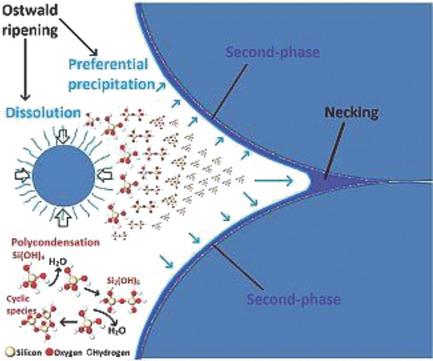当前位置:
X-MOL 学术
›
Adv. Funct. Mater.
›
论文详情
Our official English website, www.x-mol.net, welcomes your feedback! (Note: you will need to create a separate account there.)
Bio‐Inspired Hydro‐Pressure Consolidation of Silica
Advanced Functional Materials ( IF 19.0 ) Pub Date : 2018-10-11 , DOI: 10.1002/adfm.201805794 Gianmarco Taveri 1 , Salvatore Grasso 2 , Francesco Gucci 3 , Jaromír Toušek 4 , Ivo Dlouhy 1
Advanced Functional Materials ( IF 19.0 ) Pub Date : 2018-10-11 , DOI: 10.1002/adfm.201805794 Gianmarco Taveri 1 , Salvatore Grasso 2 , Francesco Gucci 3 , Jaromír Toušek 4 , Ivo Dlouhy 1
Affiliation

|
Room‐temperature hydro‐pressure‐driven densification of amorphous silica (nanoparticles and microbeads) is developed. This technique is inspired by biological silicification with reference to dissolution, precipitation, and hardening mechanisms. Cold sintering based on uniaxial pressure is taken as a benchmark. Starting from a green‐body relative density of 70%, densification exceeding 99% is achieved by adding distilled water or caustic solution to an amorphous powder under a hydrostatic pressure of 450–600 MPa for 5–30 min. Translucent samples are obtained. Silica microbeads are employed as a model system to define the effect of the sintering parameters: pressure, pH, and soaking time. Densification is attained through a preferential precipitation of a second phase from silica dissolution under hydro‐pressure. Precipitation is governed by minimization of the surface energy (Ostwald ripening). Transmission electron microscopy, NMR, thermal gravimetric analysis/differential scanning calorimetry, and Fourier transform infrared spectroscopy reveal the mechanisms of the process and the analogies with biosilicification.
中文翻译:

生物启发的二氧化硅水压固结
开发了室温水压驱动的无定形二氧化硅(纳米颗粒和微珠)的致密化。该技术的灵感来自生物硅化作用,涉及溶解,沉淀和硬化机制。以单轴压力为基础的冷烧结为基准。从生坯相对密度为70%开始,通过在450–600 MPa的静水压力下向无定形粉末中添加蒸馏水或苛性碱溶液5–30分钟,可以实现超过99%的致密化。获得半透明的样品。二氧化硅微珠用作模型系统,以定义烧结参数(压力,pH和保温时间)的影响。致密化是通过在水压下二氧化硅溶解而优先沉淀出第二相而实现的。通过最小化表面能(奥斯特瓦尔德熟化)来控制沉淀。透射电子显微镜,NMR,热重量分析/差示扫描量热法和傅里叶变换红外光谱法揭示了该过程的机理以及与生物硅化作用的相似性。
更新日期:2018-10-11
中文翻译:

生物启发的二氧化硅水压固结
开发了室温水压驱动的无定形二氧化硅(纳米颗粒和微珠)的致密化。该技术的灵感来自生物硅化作用,涉及溶解,沉淀和硬化机制。以单轴压力为基础的冷烧结为基准。从生坯相对密度为70%开始,通过在450–600 MPa的静水压力下向无定形粉末中添加蒸馏水或苛性碱溶液5–30分钟,可以实现超过99%的致密化。获得半透明的样品。二氧化硅微珠用作模型系统,以定义烧结参数(压力,pH和保温时间)的影响。致密化是通过在水压下二氧化硅溶解而优先沉淀出第二相而实现的。通过最小化表面能(奥斯特瓦尔德熟化)来控制沉淀。透射电子显微镜,NMR,热重量分析/差示扫描量热法和傅里叶变换红外光谱法揭示了该过程的机理以及与生物硅化作用的相似性。


























 京公网安备 11010802027423号
京公网安备 11010802027423号